ANIMALS
30 Most Beautiful Birds In North America
Published
1 year agoon
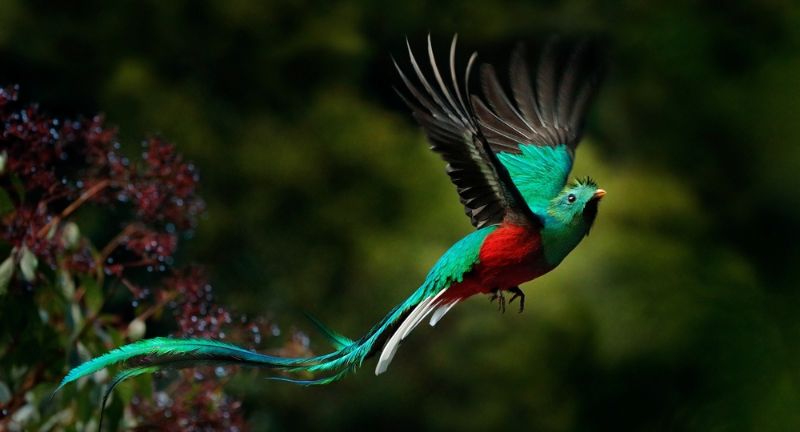
Shutterstock
North America is a continent rich in natural beauty and biodiversity, with its avian population being one of its most vibrant highlights. From the majestic flight of raptors to the delicate hues of songbirds, the variety of bird species found across this vast land is both astounding and captivating. Each bird, with its unique characteristics, contributes to the intricate tapestry of North American wildlife, offering endless opportunities for observation and appreciation. In this showcase of the continent’s avian wonders, we delve into the lives of 30 of the most beautiful birds that call North America home. These species, with their stunning plumage, melodious songs, and fascinating behaviors, stand as a testament to the natural world’s splendor and complexity.
American Goldfinch
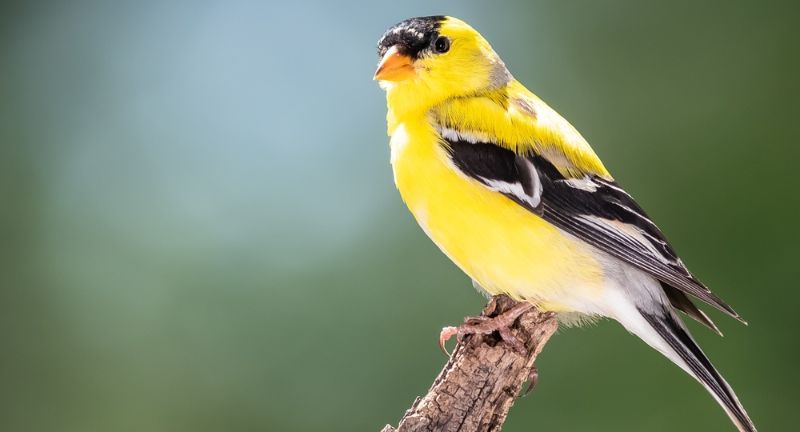
Shutterstock
The American Goldfinch is a small, vibrant bird known for its striking yellow feathers during the breeding season. They are commonly found at feeders and in open fields, bringing a splash of color to the landscape. In winter, their plumage turns to a more subdued brown, but males still retain hints of yellow. Goldfinches are social birds, often seen in flocks, and their sweet song is a delightful soundtrack to any walk in the meadow.
Bald Eagle
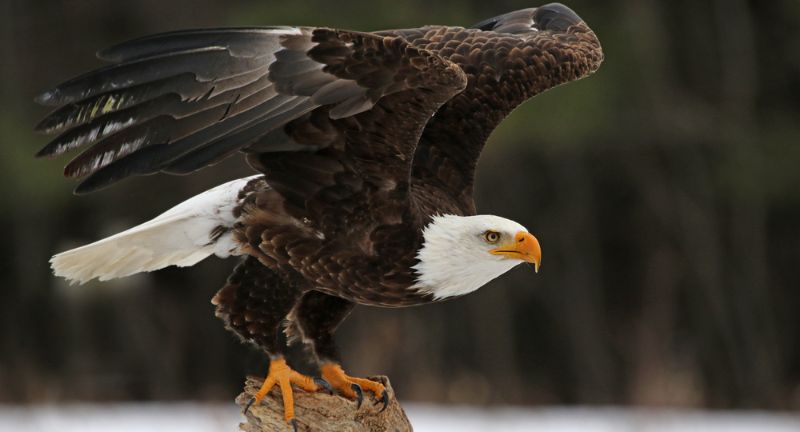
Shutterstock
The Bald Eagle, with its majestic presence, is a symbol of strength and freedom across North America. This large bird of prey is easily recognizable by its white head and tail, contrasting against a dark brown body and wings. They are often found near rivers and lakes where they fish with remarkable skill. The sight of a Bald Eagle soaring in the sky is a powerful reminder of the natural beauty and grandeur of the American wilderness.
Painted Bunting
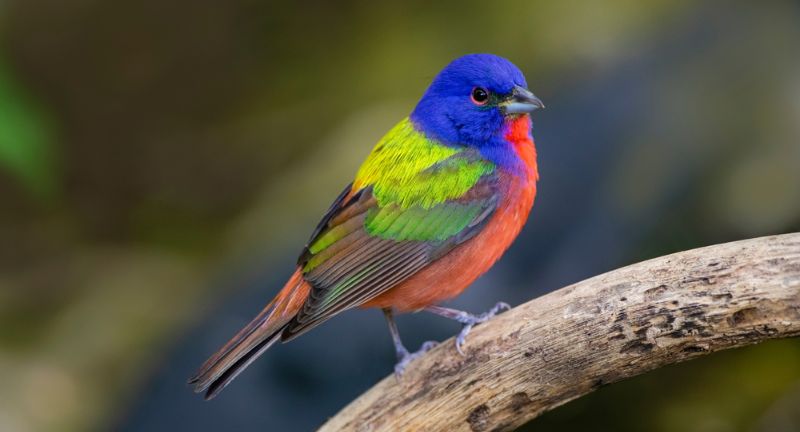
Shutterstock
Painted Buntings are among the most brilliantly colored birds found in North America, with males showcasing a vivid array of rainbow hues in their plumage. These small birds prefer brushy areas and woodland edges, where their bright colors blend surprisingly well into the foliage. During breeding season, the male’s song is as colorful as his appearance, used to attract mates and defend territory. The Painted Bunting is a treat for bird watchers, offering a glimpse of nature’s vibrant palette.
Blue Jay
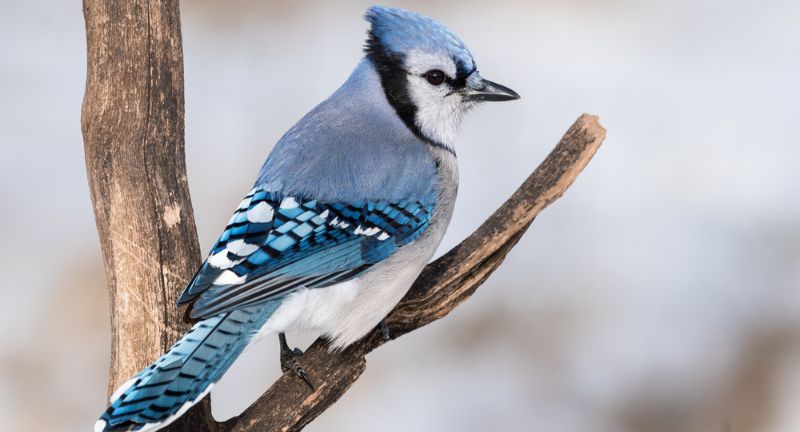
Shutterstock
Blue Jays are known for their striking blue plumage and loud, jay! jay! calls, making them one of the most recognizable birds in eastern forests and backyards. These intelligent and versatile birds are members of the crow family and are known for their complex social behaviors. They can mimic the calls of other bird species, including hawks, which they often use to scare away other birds from food sources. The Blue Jay’s vibrant blue coloration, accented with black and white, and its bold personality make it a fascinating bird to observe.
Scarlet Tanager
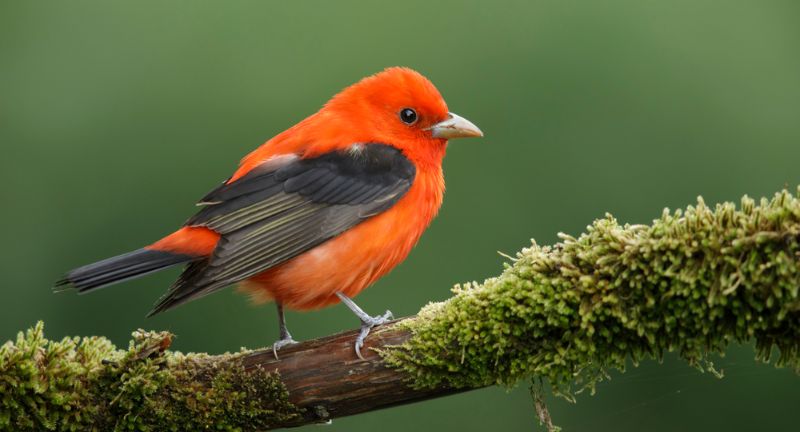
Shutterstock
Scarlet Tanagers are striking birds with the males featuring bright red bodies contrasted by black wings and tails. They spend most of their time in the high canopy of eastern forests, where their vivid plumage shines against the green leaves. During migration, they can be found in a variety of wooded or bushy habitats, making them more accessible to bird watchers. The contrast between their bright plumage and the lush forest backdrop makes the Scarlet Tanager a breathtaking sight during the breeding season.
Anna’s Hummingbird
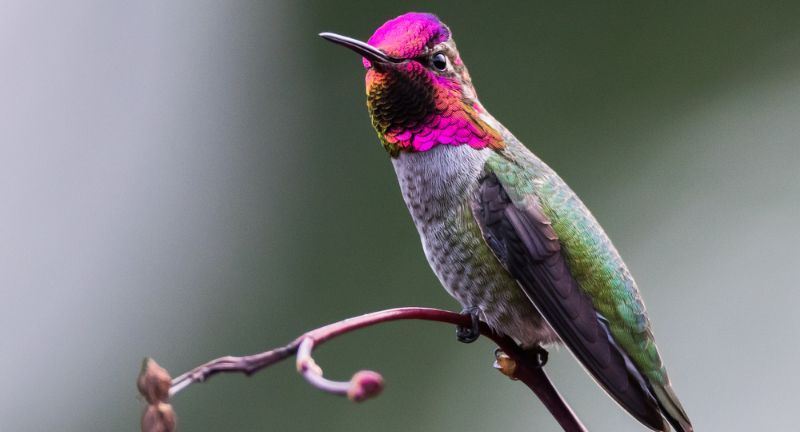
Shutterstock
Anna’s Hummingbird, a year-round resident of the western coast, is known for its beautiful iridescent green and pink plumage. These tiny birds are fearless and have been known to chase away much larger birds from their territory. The male performs a breathtaking courtship display, diving from the sky with a loud popping sound at the bottom of the dive to impress the female. Anna’s Hummingbird is a frequent visitor to feeders and gardens, where it feeds on nectar from flowers, showcasing its remarkable hovering ability.
Northern Cardinal
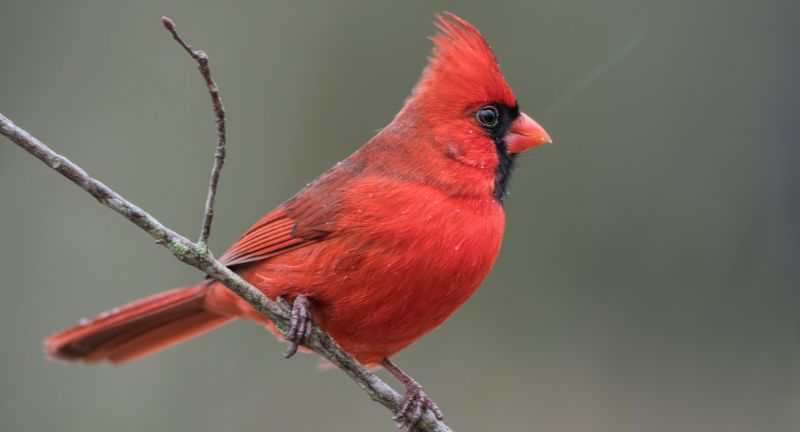
Shutterstock
The Northern Cardinal is one of the most recognizable and beloved birds, with the male’s bright red plumage and the female’s more subdued but beautiful brown tones. They are year-round residents across their range, which covers the eastern United States southward into Mexico. Cardinals are known for their clear, melodious song, which both males and females sing. These birds are often seen perched in backyards and gardens, adding a splash of color and song to any setting.
Snowy Owl
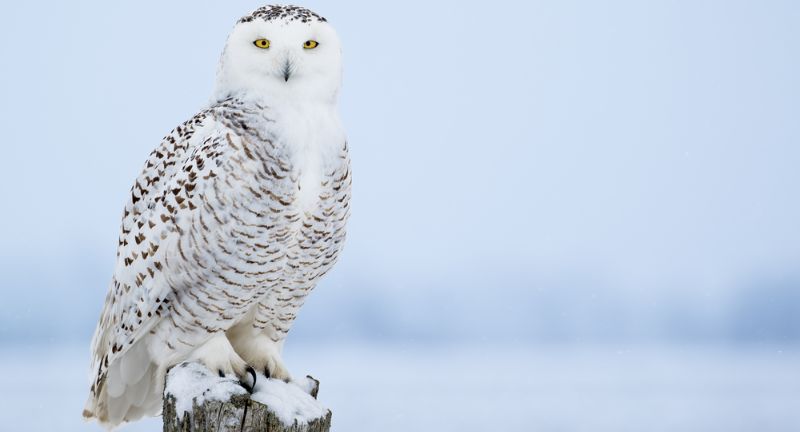
Shutterstock
The Snowy Owl is a majestic white bird, often seen during the winter months in open fields and along coastlines in North America. These large owls migrate from the Arctic, where they breed, to spend the winter in less harsh environments. Their white plumage provides excellent camouflage in their snowy habitat, with females and young birds displaying some dark scalloping. The Snowy Owl is a powerful hunter, capable of catching a wide variety of prey, making it one of the most formidable birds of the northern winter landscape.
Western Tanager
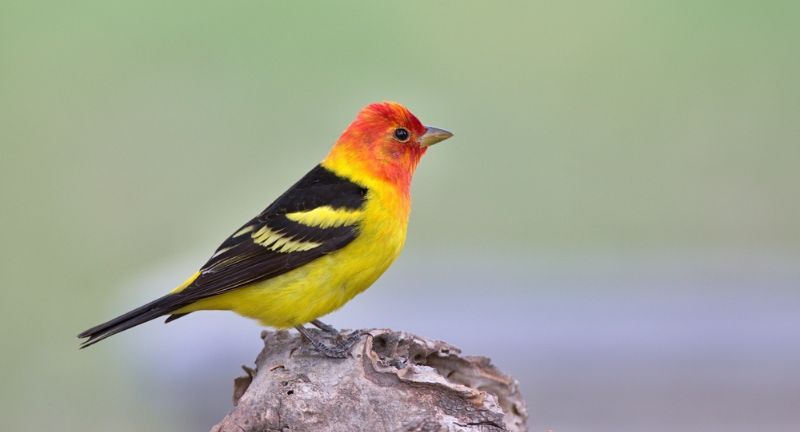
Shutterstock
The Western Tanager is a stunning bird, with males displaying a bright yellow body, black back, wings, and tail, and a striking red head. These birds breed in western forests and are a vibrant sight against the greenery. They migrate to Central America in the winter, where they can be found in open woodlands and forests. The Western Tanager’s diet mainly consists of insects and fruit, making it a beneficial species for controlling pest populations and spreading seeds.
Indigo Bunting
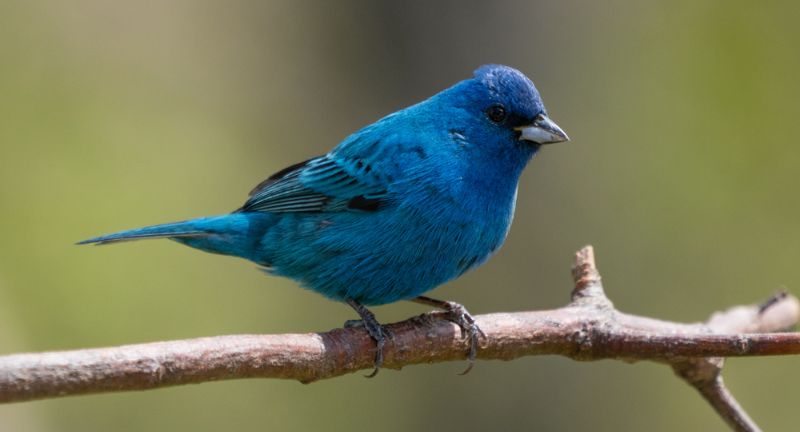
Shutterstock
The Indigo Bunting is a small bird that captures attention with its brilliant blue plumage, which is most vibrant in the sunlight. These birds are often found in rural areas, along roadsides, and in open fields where they feed on insects and seeds. The male sings from high perches during the breeding season, a sweet and melodious song that is as captivating as his color. Indigo Buntings migrate by night, using the stars for navigation, which adds another layer of wonder to their already fascinating behavior.
Roseate Spoonbill
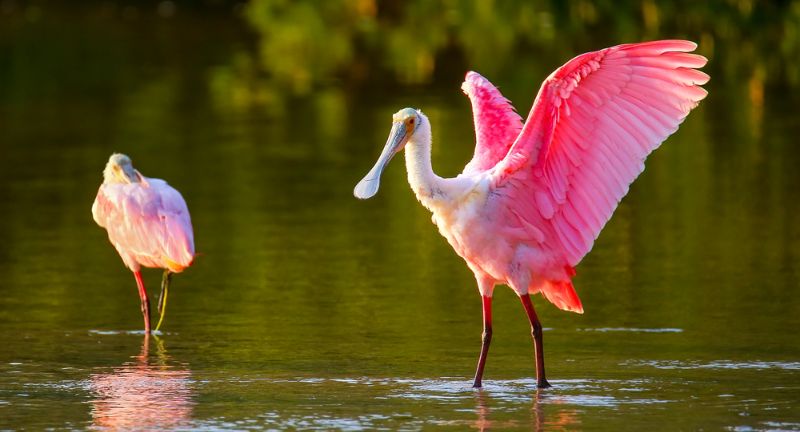
Shutterstock
The Roseate Spoonbill stands out for its stunning pink plumage and distinctive spoon-shaped bill, which it uses to sift through mud for food. These large, wading birds are found in wetlands across the southeastern United States, particularly in Florida’s coastal areas. Their coloration varies from pale pink to bright magenta, depending on their diet and age. Watching a group of Roseate Spoonbills feeding in shallow waters, with their bills sweeping side to side, is a memorable sight for any birdwatcher.
Wood Duck
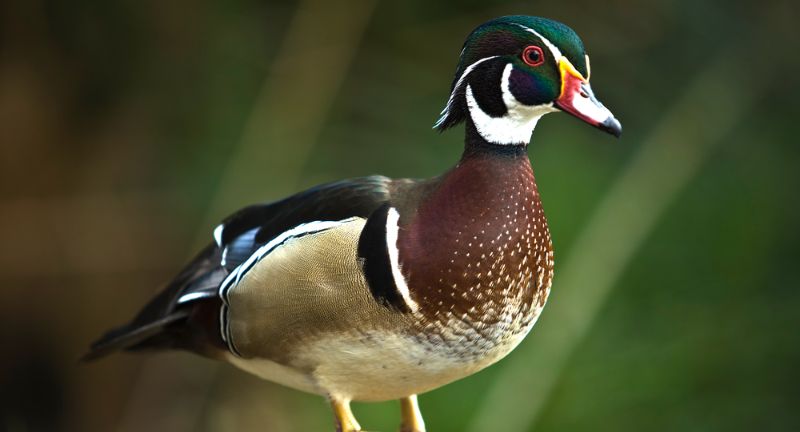
Shutterstock
The Wood Duck is arguably one of the most stunningly beautiful waterfowl in North America, known for its intricate patterns and vibrant colors. Males have a spectacular array of colors, including iridescent blues and greens, with distinctive white markings, while females boast a more subtle but equally beautiful plumage. These ducks are commonly found in wooded swamps and marshes, where they nest in tree cavities close to water. The sight of Wood Ducks gliding over water or taking flight is a testament to the incredible beauty of North American wildlife.
American Kestrel
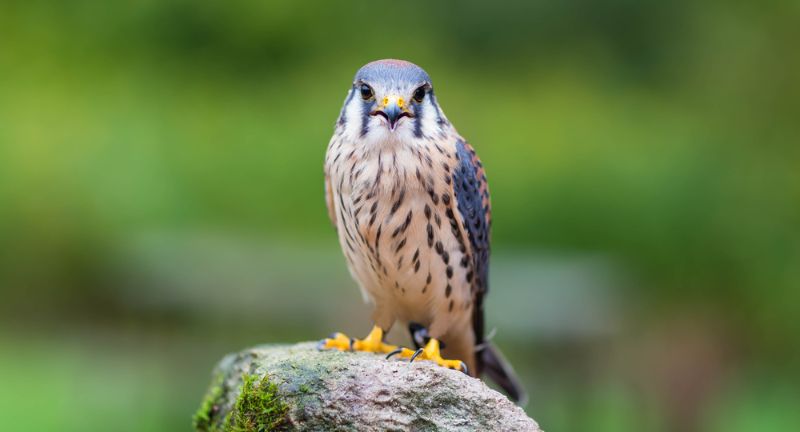
Shutterstock
The American Kestrel, North America’s smallest falcon, dazzles with its colorful plumage, showcasing oranges, blues, and grays. This bird is a master of the hunt, using its keen eyesight to spot prey from high above before diving down at impressive speeds. Kestrels can be seen perched along fence lines in open country, scanning the ground for insects and small mammals. Their ability to hover in place with rapid wing beats before striking makes them a fascinating species to observe in the wild.
Baltimore Oriole
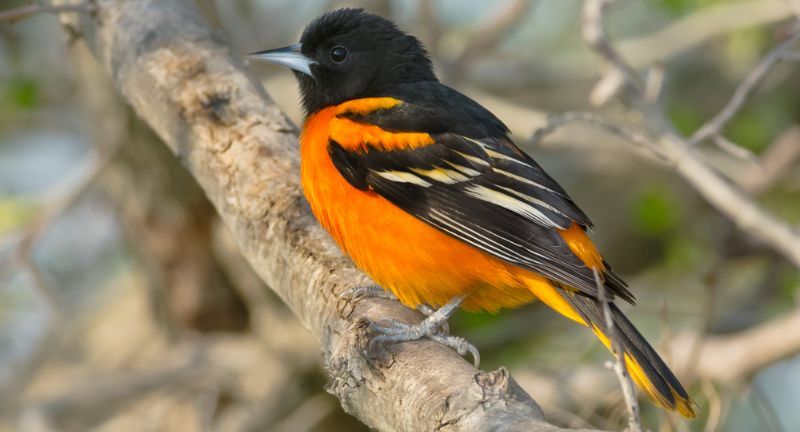
Shutterstock
The Baltimore Oriole is a herald of spring in the eastern states, with the male’s bright orange and black plumage making it easily recognizable. These medium-sized songbirds are adept at weaving intricate hanging nests from branches high in trees. Orioles are often seen flitting among tree canopies, searching for insects, fruit, and nectar, which make up their diet. The sight and sound of Baltimore Orioles returning to their breeding grounds are a welcome sign of warmer days to come.
Mountain Bluebird
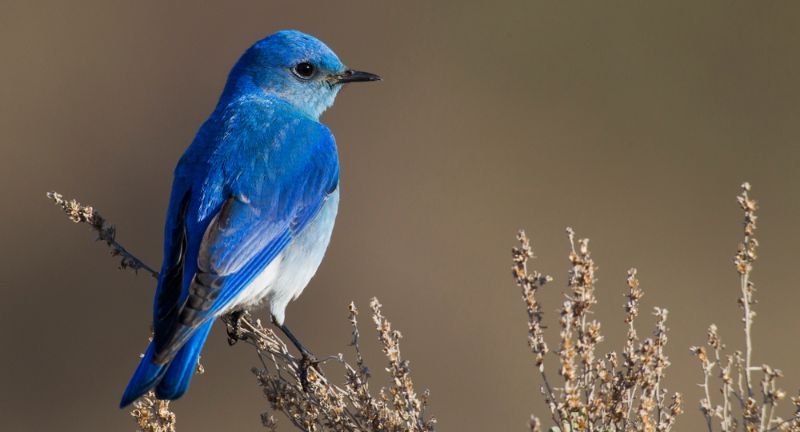
Shutterstock
The Mountain Bluebird, the state bird of Idaho and Nevada, displays a stunning bright blue plumage that makes it a breathtaking sight against the backdrop of western landscapes. These birds prefer open habitats such as meadows, where they can be seen perching on fence posts or swooping down to catch insects on the ground. The male’s vibrant blue coloration is especially striking in the sunlight, while the female sports a more subdued blue-gray appearance. The presence of Mountain Bluebirds in an area is often associated with healthy, open ecosystems, making them a joy to encounter in the wild.
Lazuli Bunting
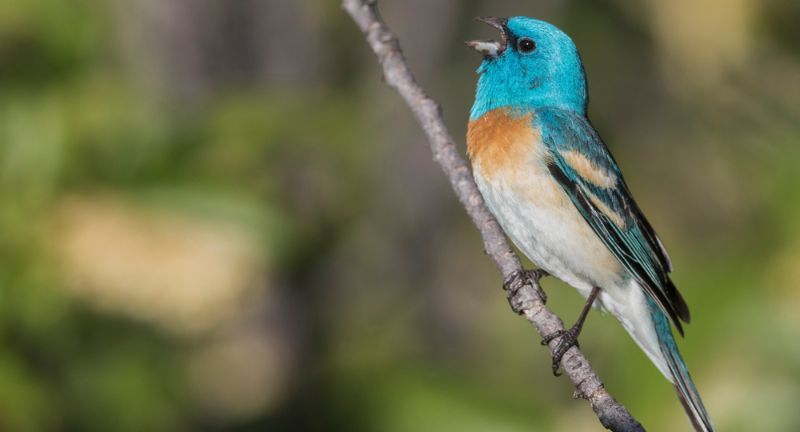
Shutterstock
The Lazuli Bunting is a small bird that lights up its environment with its bright blue head and back, combined with a cinnamon belly. Found across the western United States during the breeding season, these birds prefer brushy habitats and open woodlands. The male’s vibrant song is a delightful melody that adds to the charm of early summer mornings. Lazuli Buntings are a favorite among bird watchers, as their striking colors and sweet songs make them a beautiful addition to the natural landscape.
Ruby-throated Hummingbird
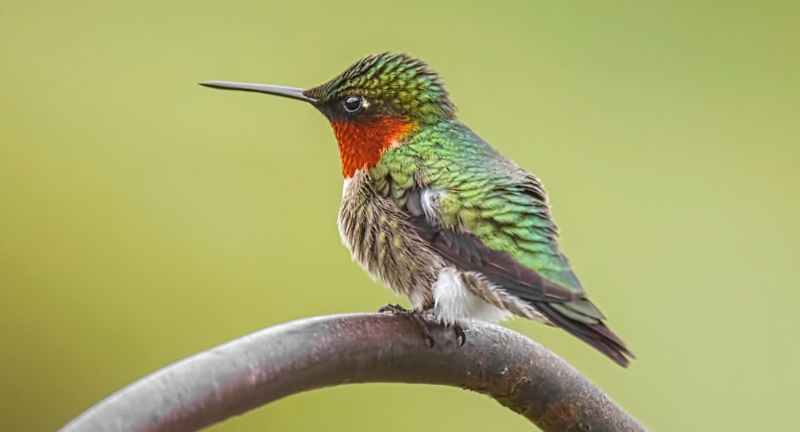
Shutterstock
The Ruby-throated Hummingbird, a jewel among birds, is known for the male’s iridescent ruby throat and emerald green body. These tiny, energetic birds are a common sight in gardens and backyards, where they feed on nectar from flowers and hummingbird feeders. Their rapid wing beats allow them to hover in mid-air with incredible precision, a sight that never ceases to amaze. Ruby-throated Hummingbirds migrate long distances between their breeding grounds in North America and wintering areas in Central America, showcasing remarkable endurance for such small creatures.
Great Blue Heron
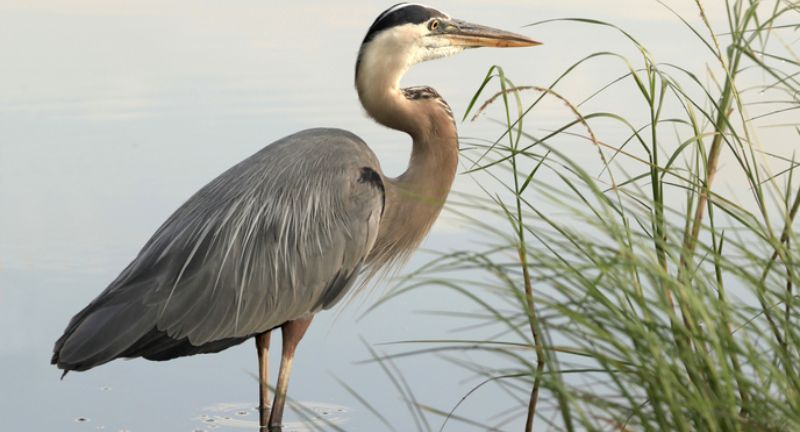
Shutterstock
The Great Blue Heron stands as one of the most majestic and easily recognizable wading birds in North America. With its long legs, neck, and striking blue-gray plumage, it exudes elegance whether standing still in shallow waters or flying with slow wingbeats across the sky. These herons are adaptable feeders, often seen hunting for fish, amphibians, and small mammals in freshwater and saltwater environments. The sight of a Great Blue Heron gracefully navigating its wetland habitat is a testament to the beauty and diversity of North American birdlife.
Violet-green Swallow
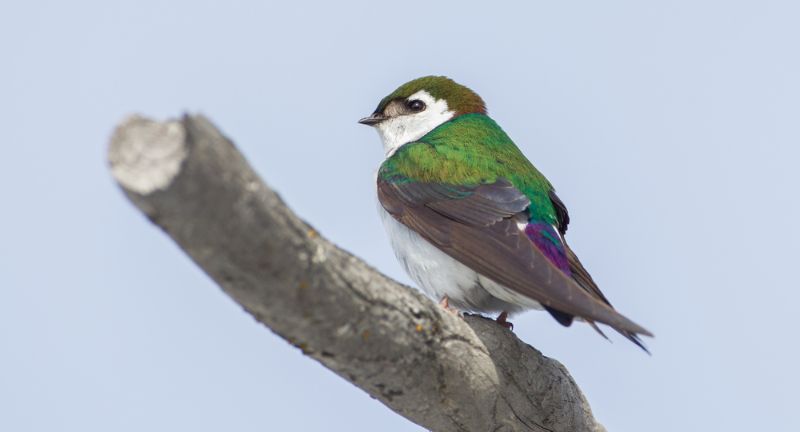
Shutterstock
The Violet-green Swallow is a small bird that enchants with its iridescent green back and violet rump and shoulders. These agile flyers are often seen zipping through the sky in search of insects, showcasing their acrobatic flight skills. They breed in tree cavities across the western United States and Canada, often near bodies of water. The sight of Violet-green Swallows darting through the air on a sunny day is a captivating display of nature’s agility and beauty.
Green Jay
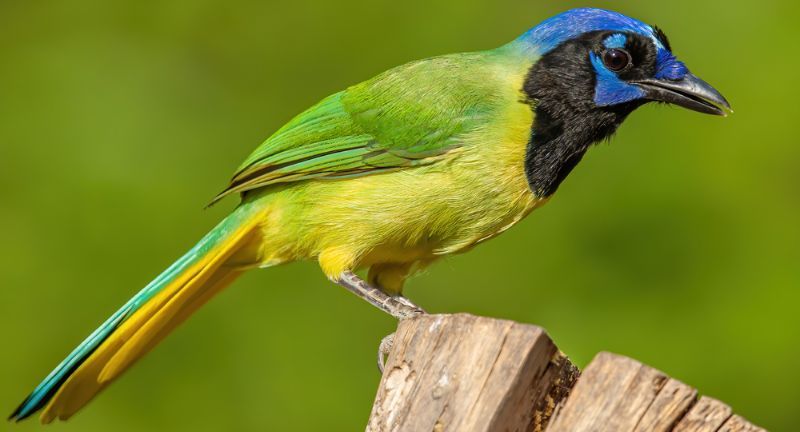
Shutterstock
The Green Jay, known for its bright green, blue, and black plumage, is a colorful addition to the southern Texas and Mexican landscapes. These intelligent birds are members of the corvid family, known for their problem-solving skills and complex social structures. Green Jays are often seen in groups, foraging for insects, seeds, and fruits, which they sometimes store for later use. Their vibrant colors and curious nature make them a fascinating subject for bird watchers and nature enthusiasts alike.
Harlequin Duck
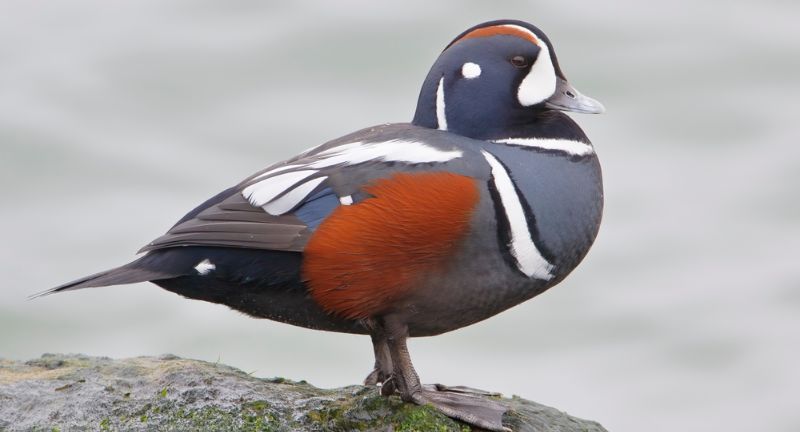
Shutterstock
The Harlequin Duck is distinguished by its striking plumage, featuring bold patterns and colors that make it stand out among North American waterfowl. Males display a unique array of blue, black, and white markings, while females have a more subdued but equally attractive coloration. These ducks are often found in fast-moving streams and coastal waters, where they expertly navigate the turbulent waters to feed. The Harlequin Duck’s resilience and distinctive appearance make it a symbol of the wild, untamed beauty of North America’s rivers and coasts.
Pileated Woodpecker
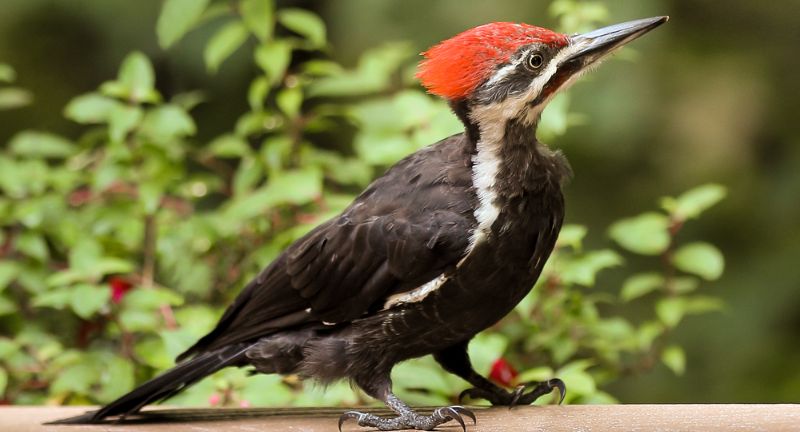
Shutterstock
The Pileated Woodpecker, North America’s largest woodpecker, is an impressive sight with its black body, white stripes, and striking red crest. This bird’s powerful beak allows it to carve out large cavities in trees, which are used for nesting and as a source of food. Their presence is often indicated by the loud drumming sound they make while pecking at wood. The Pileated Woodpecker plays a crucial role in its ecosystem, providing habitats for various species by creating nesting cavities that are used by other birds and wildlife.
Steller’s Jay
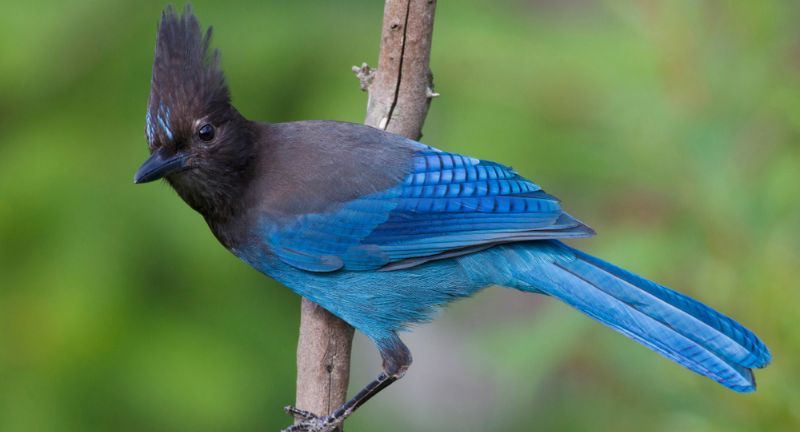
Shutterstock
Steller’s Jay is known for its striking blue and black plumage and loud, raucous calls, making it a common sight in western forests. This bird, the western counterpart to the eastern Blue Jay, exhibits remarkable intelligence, similar to other members of the corvid family. Steller’s Jays are adaptable and can often be seen visiting campsites and picnic areas in search of food. Their bold personality and vibrant colors make them a memorable part of the mountainous and forested landscapes they inhabit.
Northern Flicker
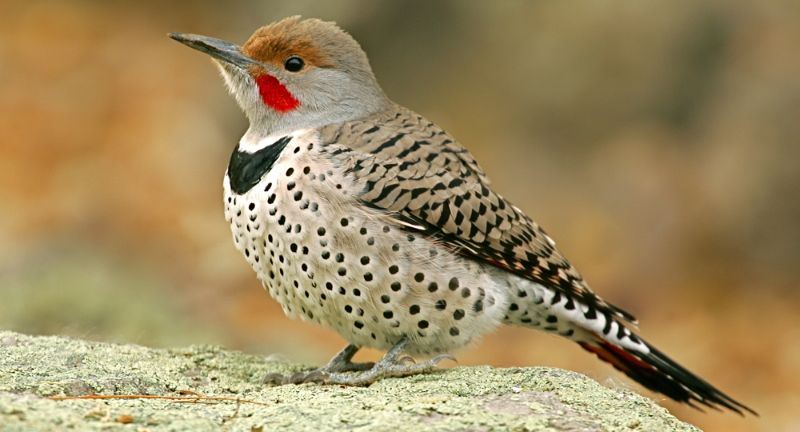
Shutterstock
The Northern Flicker is a unique and beautiful woodpecker with a spotted plumage and a distinctive call that sets it apart from other woodpeckers. They can be found across North America, in a variety of habitats from woodlands to suburban areas. Unlike other woodpeckers, Northern Flickers often feed on the ground, hunting for ants and beetles. Their bright red or yellow underwings and tails flash in flight, creating a striking visual against the sky.
Resplendent Quetzal

Shutterstock
The Resplendent Quetzal, primarily found in Central America but occasionally venturing into southern Mexico, is renowned for its vibrant green and red plumage. This bird is revered in Mayan and Aztec cultures, symbolizing freedom and wealth. The male quetzal is particularly striking, with its long tail feathers and brilliant colors. Observing a Resplendent Quetzal in its natural habitat is a rare and unforgettable experience, often considered a highlight for birdwatchers and nature enthusiasts visiting the region.
Magnificent Frigatebird
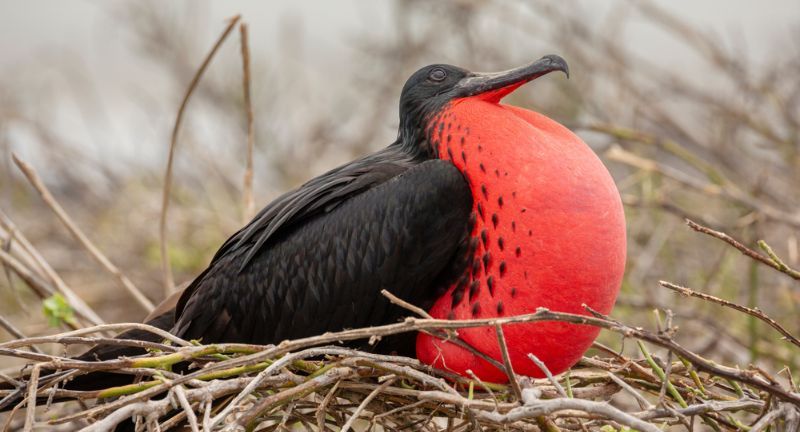
Shutterstock
The Magnificent Frigatebird is easily recognized by its immense wingspan and the male’s distinctive red throat pouch, which is inflated during courtship displays. These seabirds are often seen soaring high above tropical and subtropical oceans, rarely touching the water. They are known for their kleptoparasitic behavior, stealing food from other birds in mid-air. The Magnificent Frigatebird’s impressive aerial maneuvers and pirate-like feeding habits make it a fascinating subject of study and observation.
Puffin
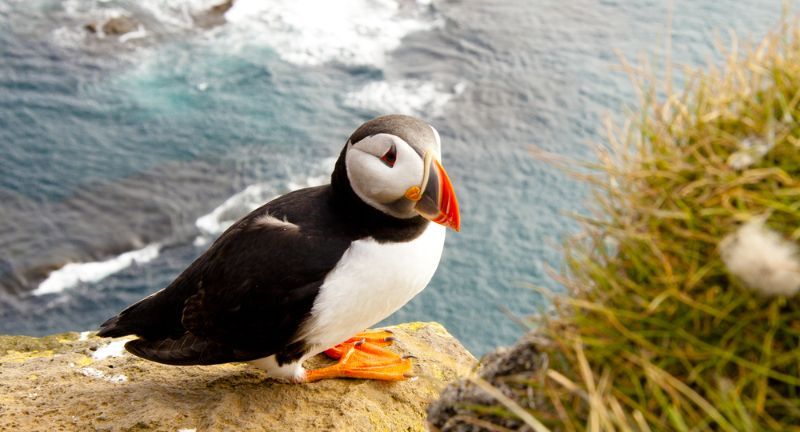
Shutterstock
Puffins, with their colorful beaks and charming appearance, are beloved symbols of the northern coasts. These seabirds are most commonly found in the North Atlantic, where they breed in large colonies on coastal cliffs. Puffins are excellent swimmers, using their wings to “fly” underwater while hunting for fish. The sight of puffins returning to their burrows with beaks full of fish is a delightful spectacle, showcasing the rich avian life of North America’s coastal regions.
Yellow Warbler
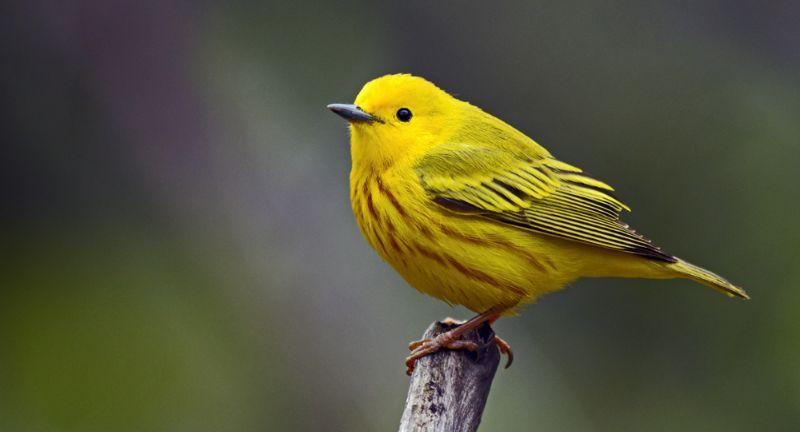
Shutterstock
The Yellow Warbler is a bright spot in any day, with its vibrant yellow plumage that seems to glow in the sunlight. These small, active birds are found across North America, from backyards to wetlands, where they flit about in search of insects. Males are particularly striking, with their rich yellow color accented by rust-colored streaks on the chest. The cheerful song of the Yellow Warbler is a common sound in spring and summer, adding to the symphony of bird calls that fill the air.
Cedar Waxwing
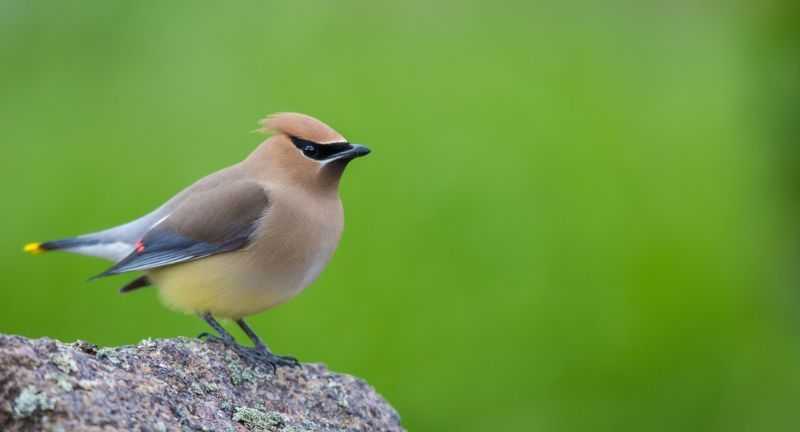
Shutterstock
Cedar Waxwings are elegant birds known for their sleek, silky plumage and distinctive red wax tips on their wing feathers. These social birds travel in large flocks and are often heard before they are seen, with their high-pitched calls signaling their arrival. They have a penchant for fruit, which makes up the majority of their diet, leading to frequent visits to fruiting trees and bushes. The Cedar Waxwing’s nomadic lifestyle and striking appearance make it a favorite among birdwatchers, embodying the grace and mystery of the avian world.
Blackburnian Warbler
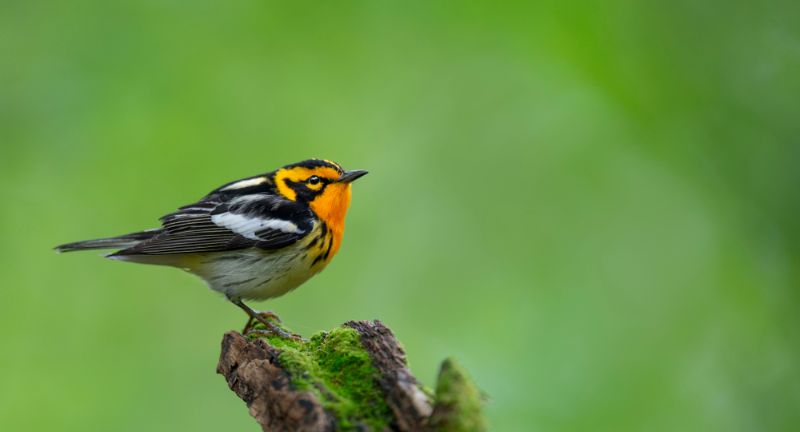
Shutterstock
The Blackburnian Warbler is a small songbird that captivates with its fiery orange throat and intricate black and white plumage. Found in coniferous and mixed forests across the northeastern United States and Canada, these birds are a highlight of any birdwatching expedition. The male’s brilliant colors and distinctive song make it stand out during the breeding season. The Blackburnian Warbler’s migration journey to South America is a testament to the remarkable endurance and navigational skills of these tiny birds.
Conclusion
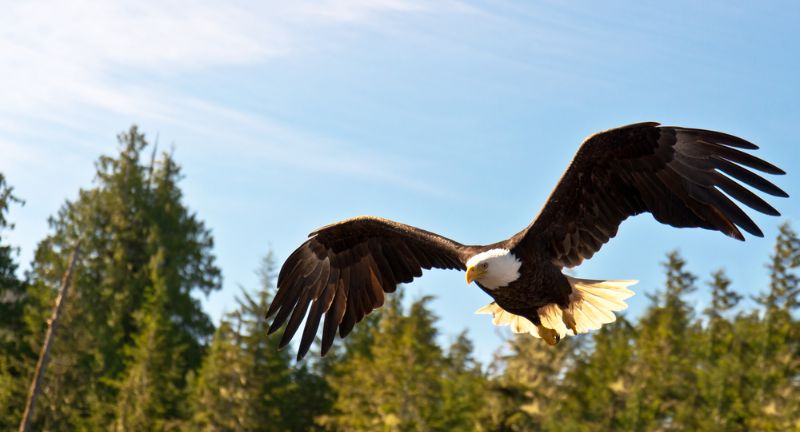
Shutterstock
Exploring the diverse and stunning array of birds that inhabit North America reveals much more than the beauty of their plumage; it opens a window into the complex interplay of ecosystems and the importance of conservation. Each of these birds, from the iridescent hummingbird to the majestic bald eagle, plays a crucial role in the health and balance of their habitats. As we marvel at their beauty and intricacies, we are reminded of our responsibility to protect these avian treasures and the environments they call home. Their continued presence and prosperity depend on our commitment to preserving natural habitats and mitigating threats to their survival. In celebrating the beauty of North America’s birds, we also embrace the larger call to stewardship of the planet, ensuring that future generations can enjoy the chorus and colors of these remarkable creatures.
More Amazing Animals+
-
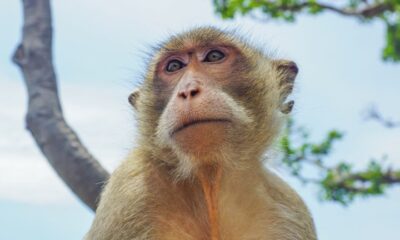

Life’s a Jungle: Uncovering the Most Fascinating Monkey Secrets
-


Mr. Butts the Pug Attempts to Skateboard
-
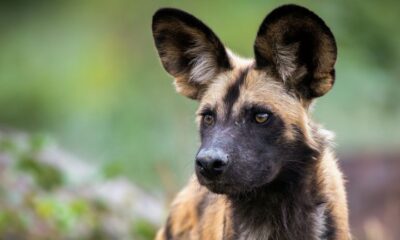

21 Animals That Are Considered Stone Cold Killers
-
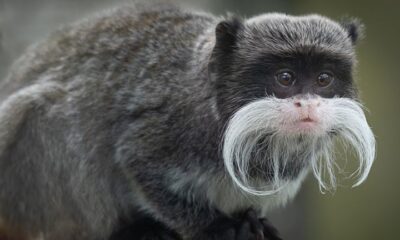

27 Animals That Look Like They Could Be A Cartoon…
-


These are the snacks experts say cats are really into…
-
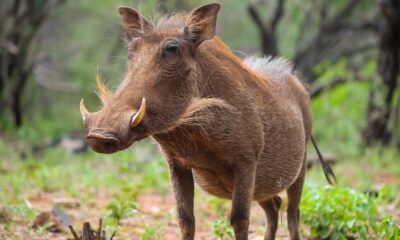

22 Disney Characters As Real Life Animals
-
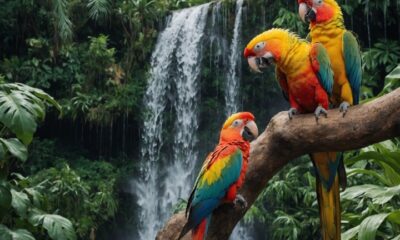

What Makes Macaws So Interesting
-
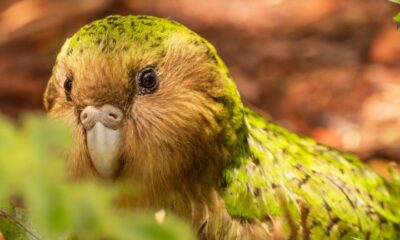

20 Animals At Risk Of Extinction That Need Our Help
-
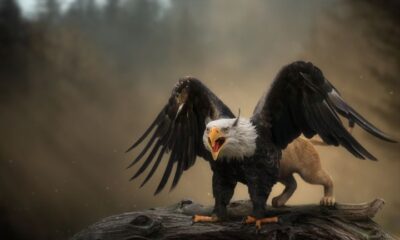

25 Mythical And Misunderstood Animals
-


Today a 12 foot Great White shark was spotted less…
-
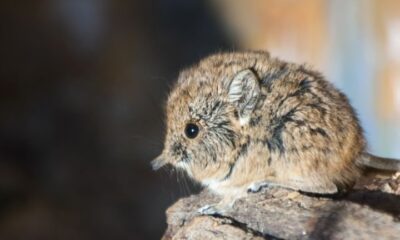

25 Unusual But Undeniably Adorable Baby Animals
-
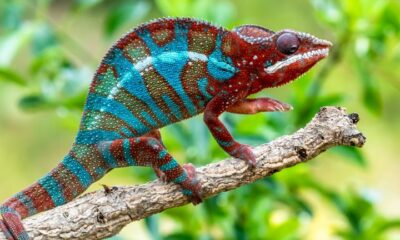

15 Wildest Animals In The Everglades
